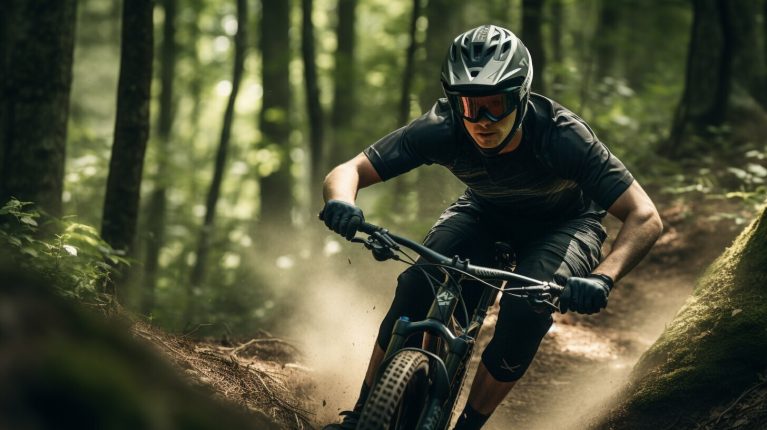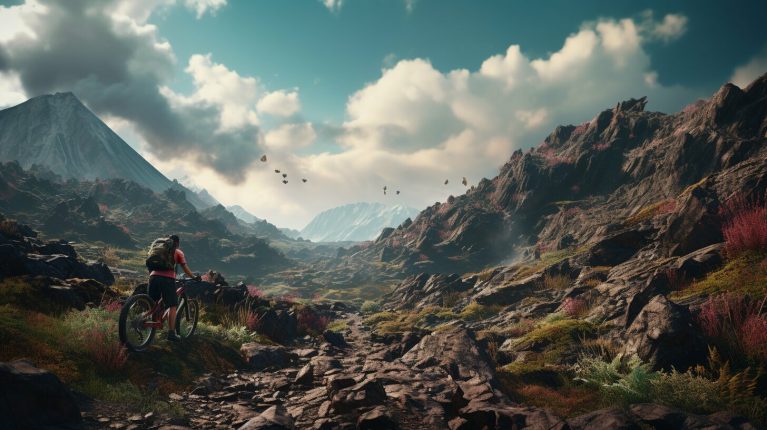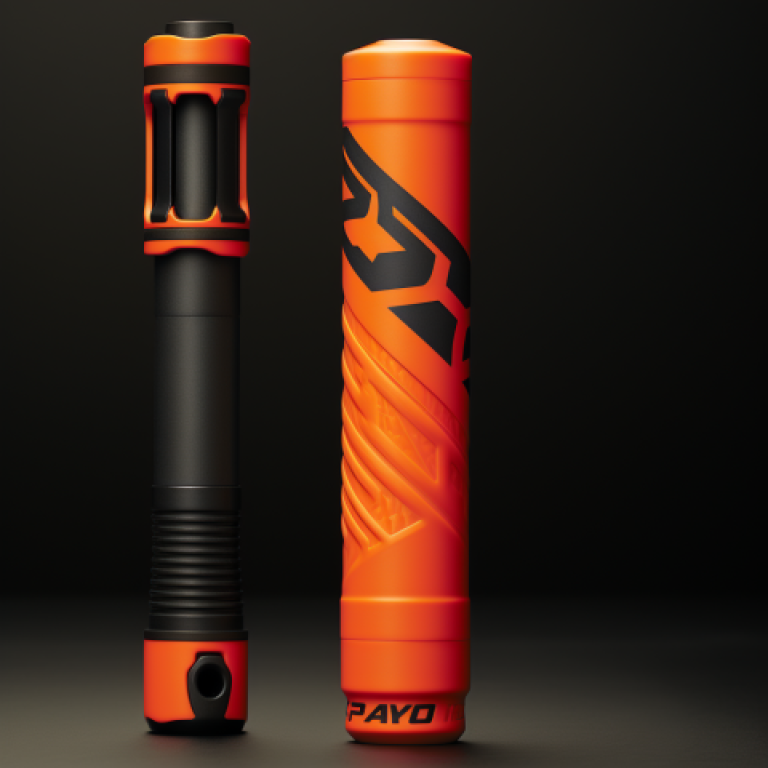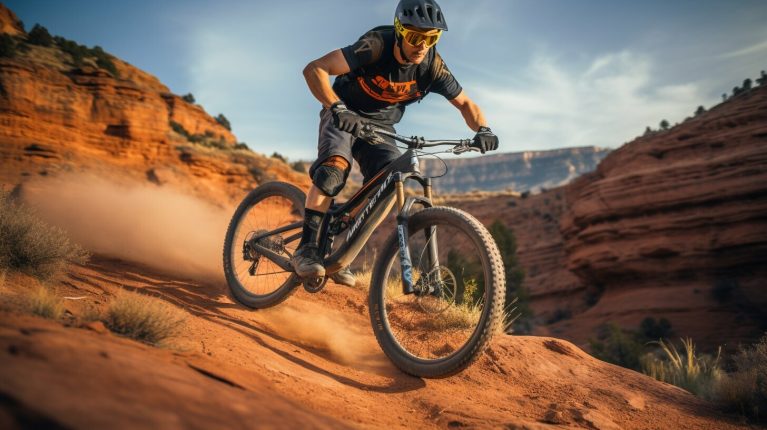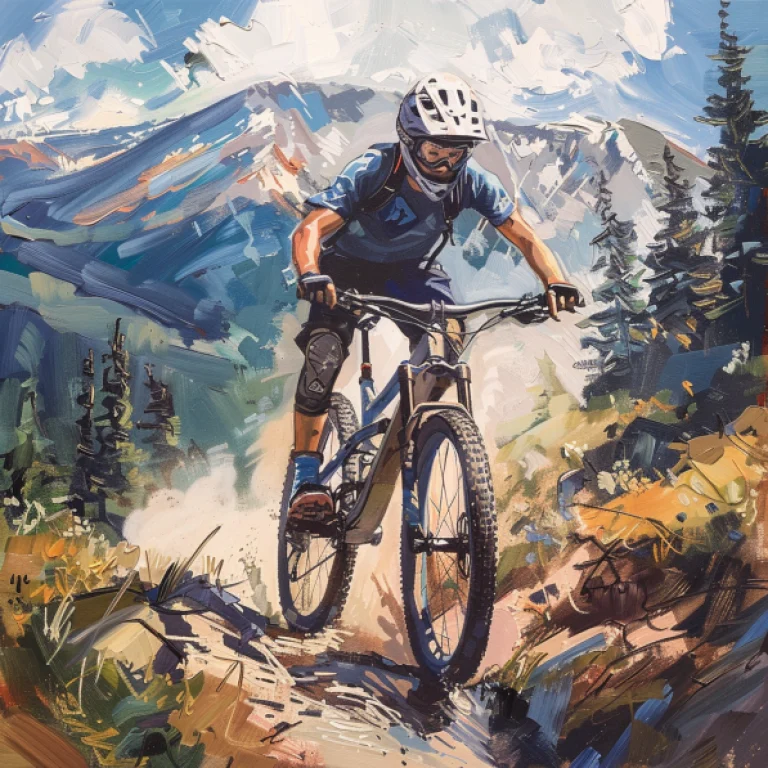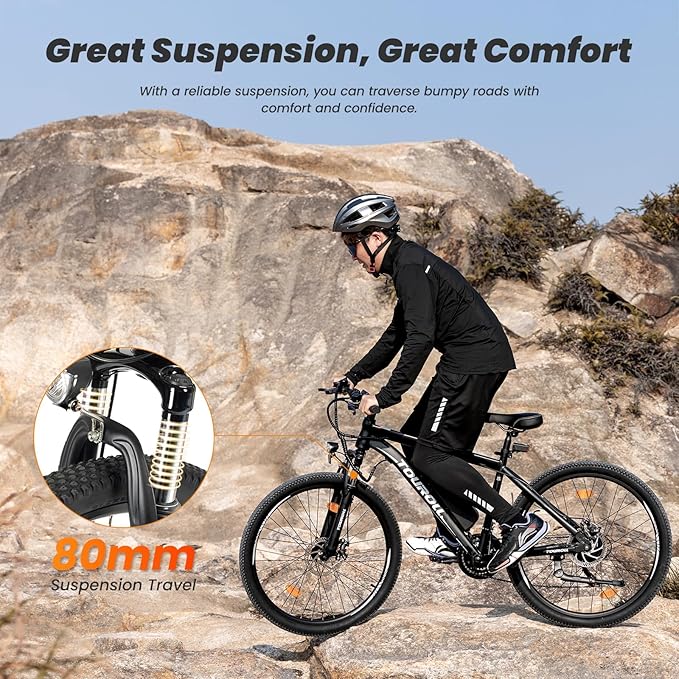Mountain Bike Buyers Guide: Choosing Your Perfect Ride
Mountain biking is more than just a sport – it’s a lifestyle. It’s an exhilarating way to explore nature, push your limits, and get a fantastic workout. But to truly enjoy the experience, you need the right bike. This comprehensive guide will help you navigate the world of mountain bikes and choose the perfect ride for your needs.
Understanding Mountain Bikes
Mountain bikes come in various types, each designed for specific terrains and riding styles. Let’s explore some of the most common types:
Kids Mountain Bikes
Starting young is a great way to instil a love for mountain biking. Kids mountain bikes are designed with smaller frames and wheels to accommodate younger riders. They also come with safety features like easy-to-reach brakes and lower standover heights to make riding more comfortable and enjoyable for kids.
Full Suspension Bikes
Full suspension bikes are the undisputed champions when it comes to comfort and performance on rough terrains. They have shock absorbers for both the front and rear wheels, providing a smoother ride by absorbing impact from both ends. This makes them an ideal choice for off-road biking and downhill trails. Brands like Trek, Giant, and Specialized are known for their high-quality full suspension bikes.
Front Suspension Bikes
Front suspension bikes, also known as hardtails, have a suspension fork in the front but no suspension in the rear. This makes them lighter and typically more efficient on smooth trails and climbs. They’re also generally less expensive than full suspension bikes, making them a popular choice for beginners and budget-conscious riders.
Essential Gear and Accessories
Aside from the bike itself, there are several other items that can enhance your mountain biking experience:
Safety Gear
Safety should always be your top priority when mountain biking. Helmets, gloves, knee and elbow pads, and eye protection are all essential safety gear that can protect you from injuries.
Bike Accessories
Bike accessories can add functionality and convenience to your rides. These can include water bottle holders, bike lights, GPS devices, and saddle bags for carrying essentials.
Bike Maintenance
Regular bike maintenance is crucial to keep your bike in top condition. This includes cleaning the bike after each ride, checking the tire pressure, and inspecting the brakes and gears for any issues.
Making the Right Choice
Choosing the right mountain bike depends on several factors, including your riding style, the type of trails you ride, and your budget. Here are some tips to help you make the right choice:
- Identify Your Riding Style: Are you into cross-country, trail riding, or downhill? Your riding style can determine the type of bike that suits you best.
- Consider the Terrain: If you frequently ride on rough terrains or enjoy downhill biking, a full suspension bike can provide the comfort and control you need. On the other hand, if you mostly ride on smooth trails or use your bike for commuting, a front suspension bike might be more efficient.
- Set a Budget: Mountain bikes can range from a few hundred to several thousand pounds. Set a budget that you’re comfortable with, but remember that investing in a good-quality bike can save you money on repairs and replacements in the long run.
Remember, the best bike is the one that fits your needs.
Mountain Bike Buyers Guide: Components and Adjustments
In the first part of this guide, we discussed the different types of mountain bikes and some essential gear and accessories. Now, let’s delve deeper into the specifics of mountain bike components and how to adjust and maintain your bike for optimal performance and longevity.
Key Components of a Mountain Bike
Understanding the key components of a mountain bike can help you make an informed decision when buying a bike and allow you to better maintain and adjust your bike.
Frame
The frame is the backbone of your mountain bike. It holds all the other components together and significantly influences the bike’s weight, strength, longevity, ride quality, and price. Mountain bike frames are typically made from one of three main materials: aluminum, steel, or carbon fiber. Each material has its pros and cons in terms of weight, durability, and cost.
Suspension
The suspension system is what makes mountain bikes capable of handling rough terrains. As we discussed in the first part of this guide, mountain bikes can be full suspension, with shock absorbers on both the front and rear wheels, or front suspension (hardtail), with a suspension fork only on the front wheel.
Wheels
The size of the wheels can affect the bike’s performance. Larger wheels (29 inches) roll faster and smoother over obstacles but can be less agile. Smaller wheels (27.5 inches or 26 inches) are lighter and more maneuverable but may not roll as efficiently over rough terrains.
Gears
The number of gears on a mountain bike can range from one to more than 30. Having more gears gives you more options to adjust your pedaling speed (cadence) to the terrain, but it also adds weight and can complicate the bike’s operation.
Brakes
Mountain bikes typically come with either disc brakes or rim brakes. Disc brakes are more reliable in all conditions but are heavier and more expensive. Rim brakes are lighter and cheaper but less effective in wet or muddy conditions.
Adjusting Your Bike
Properly adjusting your bike can enhance your comfort and efficiency while riding. Here are some key adjustments you should consider:
Saddle Height
Your saddle height should be adjusted so that your leg is slightly bent when the pedal is at its lowest position and your foot is flat. This allows for efficient pedaling while reducing the risk of knee injuries.
Handlebar Height
The handlebar height affects your riding position and control over the bike. A lower handlebar height puts you in a more aerodynamic position but can strain your back and arms. A higher handlebar height gives you a more upright riding position, which can be more comfortable for long rides and steep climbs.
Suspension Settings
The suspension settings can be adjusted to match the terrain and your riding style. Most suspension systems allow you to adjust the spring rate (how much force is needed to compress the suspension) and damping (how quickly the suspension returns to its uncompressed state).
Bike Maintenance
Regular maintenance is crucial to keep your bike in top condition and prolong its lifespan. Here are some maintenance tasks you should regularly perform:
Cleaning
Clean your bike after each ride, especially if you’ve been riding in muddy or wet conditions. This helps prevent dirt and grime from building up and causing wear and tear on your bike’s components.
Tire Pressure
Check your tire pressure before each ride. The correct pressure depends on the tire’s size, the terrain, and your weight. Riding with too low or too high tire pressure can affect your bike’s performance and increase the risk of punctures.
Brake and Gear Checks
Regularly check your brakes and gears for any issues. If your brakes are less responsive than usual or your gears are not shifting smoothly, you may need to adjust or replace some components
Chain and Drivetrain
The chain and drivetrain are essential for transferring power from your pedaling to the wheels. Keep them clean and lubricated to ensure smooth operation and prevent premature wear.
Suspension System
Regularly inspect your suspension system for any signs of damage or wear. Some suspension components, like the RockShox Pike Ultimate RC2, Fox 36 Factory Grip2, and Marzocchi Bomber Z2, offer adjustable settings that you can fine-tune for your specific riding style and terrain.
Mountain Bike Buyers Guide: Advanced Tips and Techniques
In the first two parts of this guide, we covered the basics of mountain bikes, including the different types, key components, and how to adjust and maintain your bike. Now, let’s delve into some advanced topics to help you get the most out of your mountain biking experience.
Bike Fitting
Proper bike fitting is crucial for comfort, efficiency, and injury prevention. Here are some aspects to consider:
Saddle Position
The saddle position affects your comfort and pedaling efficiency. It should be level to support your full body weight and allow easy movement. Its height should be adjusted so that your knee is slightly bent when the pedal is at its lowest position.
Handlebar Position
The handlebar position affects your steering and balance. It should be at the same level as your saddle or slightly higher. The handlebar’s width should match the width of your shoulders to allow comfortable steering.
Pedal Position
Your feet should be positioned flat on the pedals during the downstroke. This allows for efficient power transfer from your legs to the bike.
Advanced Maintenance Techniques
Regular maintenance is crucial to keep your bike in top condition. Here are some advanced techniques:
Regular Inspection
Regularly inspect your bike for any signs of wear or damage. Pay special attention to the brake pads, chain, gears, and tires. Replace any worn-out parts promptly to prevent further damage.
Professional Servicing
Consider getting your bike professionally serviced at least once a year. Professional mechanics have the skills and tools to perform thorough inspections, adjustments, and repairs.
DIY Repairs
Learning to do basic repairs can save you time and money. This includes fixing a flat tire, adjusting the brakes and gears, and replacing the chain.
Improving Your Riding Skills
Mountain biking is a skill-intensive sport. Here are some tips to improve your skills:
Practice Regularly
The best way to improve your skills is to ride regularly. Try to ride different types of trails to challenge yourself and develop a wide range of skills.
Learn From Others
Join a local mountain biking club or group to learn from more experienced riders. They can provide valuable tips and feedback to help you improve.
Take a Course
Consider taking a mountain biking course to learn advanced techniques and safety tips. This can be particularly helpful if you’re new to the sport or want to take your skills to the next level.
Conclusion
Mountain biking is a fun and rewarding sport. Whether you’re a beginner or an experienced rider, there’s always something new to learn and explore. Remember, the most important thing is to enjoy the ride.

